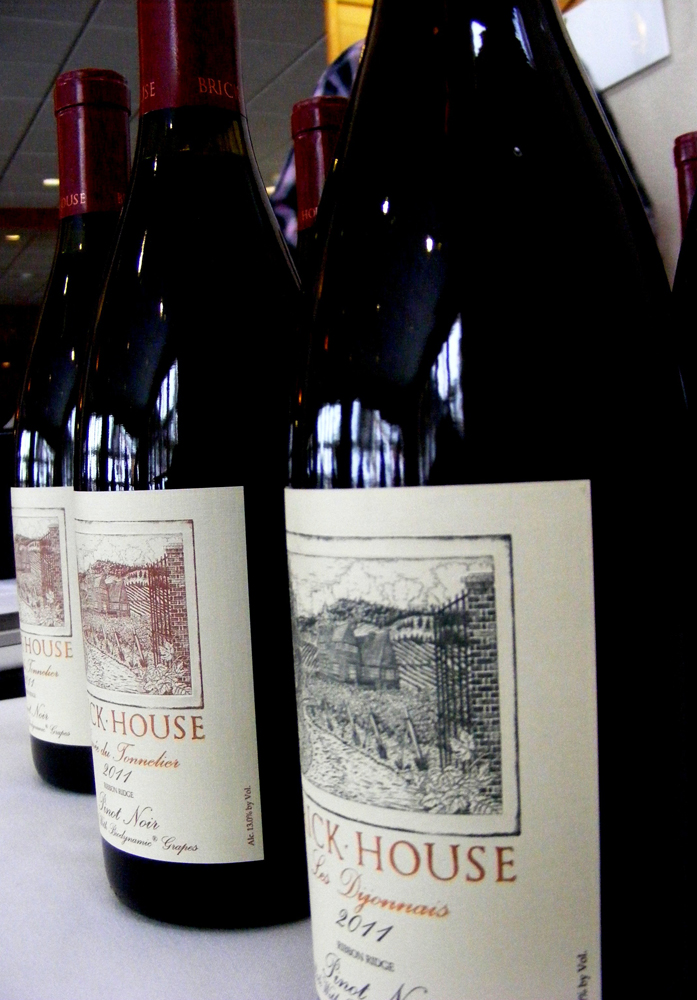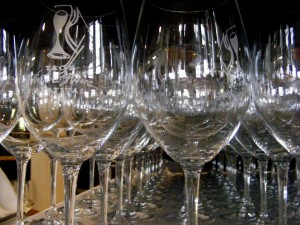 Fortunate enough to be graced with a Press Pass to the 28th Taos Winter Wine Festival, one found themselves at the base of chairlift #1 up at the Taos Ski Valley’s Resort Center this past February 1st to attend the Grand Tasting of the Festival.
Fortunate enough to be graced with a Press Pass to the 28th Taos Winter Wine Festival, one found themselves at the base of chairlift #1 up at the Taos Ski Valley’s Resort Center this past February 1st to attend the Grand Tasting of the Festival.
In the awkward moments prior to the Tasting’s opening, eager wine-industry folk talked turkey as collegial Winemakers made the rounds to discuss farming, weather, and other Winemaker speak, as skiers fresh off the powder brushed past caterers carrying cases of wine and stemware in the lightly falling snow.
Aside from the smorgasbord of wines and bites available at the Grand Tasting, Winter Wine also brought a level of seriousness to town that afforded oenophiles the opportunity to cut their teeth in a professional tasting environment through a number of Seminars.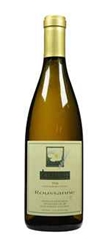
I had the opportunity to attend Old World vs. New World, held at El Monte Sagrado Resort, a seminal tasting that clearly delineated the differences between “Old” and “New” worlds through detailed descriptions of the factors that come into play for the respective styles.
Master Sommelier Joe Spellman was in top form as he led a group of fifty-or-so of us through eight wines in a blind-tasting format. As we swirled and sniffed our wines, Spellman randomly asked our impressions, using those to convey important points in the differences between the two.
We started with a white that perfectly fit the theme, which was eventually revealed as a “new” world Chardonnay from the windswept and fog-laden Sta. Rita Hills AVA, between the tiny town of Buellton (of Sideways fame) and low-key Lompoc, close to the Pacific Ocean.
Wine number two posed more of a challenge as it was flawed, yet not so much that it was undrinkable, and it’s quite possible that said flaws could have been interpreted as a stylistic choice on the Winemaker’s part. In any event, the wine was eventually revealed to be an old-world Chardonnay, and in the process of the revealing, differences in climate, Winemaker choices, barrel usage, and geography were shown to be among the major differences between old world and new.
 The remaining six wines were reds, among them a memorable 2004 Clos Veugeot Pinot Noir and its “new” world counterpart, a somewhat fruit-forward, yet nuanced 2006 Alma Rosa Pinot from the Sta. Rita Hills.
The remaining six wines were reds, among them a memorable 2004 Clos Veugeot Pinot Noir and its “new” world counterpart, a somewhat fruit-forward, yet nuanced 2006 Alma Rosa Pinot from the Sta. Rita Hills.
An Haute- Mèdoc Bordeaux balanced masculine and feminine deftly among just enough wood to keep everything in frame, while its Washington State counterpart was stout and bold, yet refined enough to make me think it was a hillside Napa Valley Cabernet initially.
Finally, old and new worlds Syrah were offered from two exceptional terroir – Crozes-Hermitage, in the Northern Rhône, and Santa Barbara County in California. The 2011 Domaine Combier Crozes-Hermitage showed unmistakable dried spice aromas and gave credence to the argument that terroir can be tasted, while the 2010 Jaffurs Syrah showed the promise of the grape in California and re-affirmed my belief that time will show Syrah to be among the finest California has to offer.
To elaborate this point, the second seminar – held hours before the Grand Tasting, showcased Northern and Southern California Rhône varietals from Sonoma County’s Donelan Family and Santa Barbara’s Jaffurs. The seminar, called Rhône Rangers not only showed how well Syrah does in California, but how well the grape has developed over the past twenty-or so years there.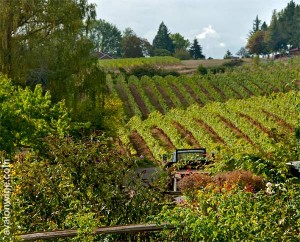
Once again, Joe Spellman was on hand to lead the tasting, this time accompanied by Jaffurs‘ General Manager and Assistant Winemaker David Yates, as well as Tripp Donelan of Sonoma County’s Donelan Family Wines, who helped set the bar for North Coast Syrah in its previous incarnation as Pax Wine Cellars.
Rather than resting on their laurels, Donelan is intent on growing their reputation by deepening their relationship with their select vineyard sites to explore the possibilities of cool-climate Syrah, while Jaffurs maintains the excellence that’s come to be associated with them and their select vineyard sites in Santa Barbara – including the legendary Bien Nacido, dry-farmed, limestone laden Stolpman, and the cooler Ampelos vineyard in Sta. Rita Hills, which is Demeter certified Biodynamic.
On the Trail of the Rhône Rangers
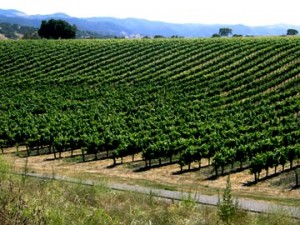 Out the window, dry, fluffy powder gently fell in balletic wisps behind Joe, Tripp and David as we got into the first wine, Donelan’s 2012 Venus, a Roussanne/ Viognier blend that left me wondering why it is that Roussanne isn’t more celebrated. This Bennett Valley Rhône white had all the character and depth of its famous white Châteauneuf -du-Pape counterpart, showing panoply of exotic scents, an unctuous beeswax mouth feel, and wonderful acidity that shone all the way through to the last.
Out the window, dry, fluffy powder gently fell in balletic wisps behind Joe, Tripp and David as we got into the first wine, Donelan’s 2012 Venus, a Roussanne/ Viognier blend that left me wondering why it is that Roussanne isn’t more celebrated. This Bennett Valley Rhône white had all the character and depth of its famous white Châteauneuf -du-Pape counterpart, showing panoply of exotic scents, an unctuous beeswax mouth feel, and wonderful acidity that shone all the way through to the last.
We followed that with Jaffurs’ 2011 Stolpman Vineyard Rousanne from the prized Ballard Canyon area of Santa Barbara.
One hundred percent Rousanne, and lightly fined and filtered, the resulting juice exhibits white flower and tropical fruit aromas and a pronounced mineral component that seamlessly intermingles with lemon-lime flavors among a plusher beeswax component than its predecessor.
Both wines represent a world of dry white wines that have yet to gain a stronghold in the American market. Lack of vineyard planted to the grape and marginalization from the wine press keep Rousanne somewhat of an anomaly among the sea of white that emerges from California on a yearly basis – which is unfortunate, as most of it is vapid and unable to distinguish itself from the pack.
On the other hand, the offerings from these producers serve as a benchmark for Rousanne in the new world and will age with distinction in your cellar.
Our third wine found us in the robust world of reds, however, pleasantly absent were the usual suspects over over-oaking and excess body manipulation: In their stead, balance, bright fruit, and complexity. 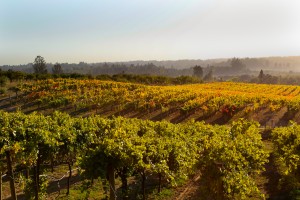
Jaffurs 2010 High Tide, an homage to Châteauneuf du Pape, is a blend of 50% Mourvèdre, 33% Grenache and 17% Syrah, and was an auspicious introduction to the world of California Rhône varietals in the regard it showed their best attributes; power, yet balance, complexity, yet familiarity.
Through the blending process, vintners are able to achieve perfect balance by utilizing the varietals at hand to accentuate particular characteristics and nuance.
In the case of the High Tide, Mourvédre provides darker fruit and deep ripeness, and is used in much the same way Caravaggio used shadow to create the deft balance of chiaroscuro (light and shadow) in his work, Grenache providing the light in this instance in the form of bright red fruit. Estrella clone Syrah brings mid-palate stability as well as exotic spiciness to bear. The resulting wine is of medium body with a lush mid-palate giving way to a crisp red fruit finish.
Donelan’s 2010 Cuvée Moriah uses the same grapes as the high tide, but in different percentages: 54% Grenache, 26% Syrah and 20% Mourvédre. The result is a wine that’s slightly more fruit-forward than the high tide with accompanying forest and herbes de Provence aromas lending an earthy quality. Both are superb.
Keeping with the feminine-named cuvée theme (named after Donelan daughters) Donelan’s 2008 Cuvée Christine (65% Grenache, 35% Syrah) reminded one of the waning hours of a summer’s day on a ranch somewhere in California’s wine country ; done baking for the day, the soil gives its redolent sigh of hot fruit and dusty aromas among a cooling breeze as shadows lengthen.
Perhaps the door to the tack shed is open and a whiff of leather wafts out as you chance by.
As the horses cool, you head back to the house. Out the back door comes a loved one with a smile and a glass of cellar temperature wine.
It’s deep purple and flecked with magenta in the saffron sunlight. The first sip offers dark, ripe cherry and some blueberry with dusty tannins. Thirst-slaking bright acid keeps the wine lively and sharp after a vivid mid-palate and a distinct earthy component.
Sipping on your ’08 Cuvée Christine and looking out over the orderly rows of vines under the shade of a colossal oak, your thinking to yourself, “Can’t get much better than this,” when suddenly, the soft breeze flits by, laced with the distinct smokiness of barbeque, and you realize you were wrong — it just did.
Jaffurs’ 2008 Thompson Vineyard Syrah was packed with robust, ripe, dark-berry flavors and was deeply concentrated. A distinct black pepper quality separated it from the pack and reminded one of a Rhône Syrah, if not for the new world body. It’s not that it seemed flabby or over-oaked, but there was a concentrated feel to it that seemed to signal healthy, rich fruit in a conspicuously California way.
The last two wines were from the 2011 vintage, a tempestuous year that had wineries on their toes, but nothing these two couldn’t handle. There’s too much pedigree at hand to let the occasional challenging year throw them off their game.
Correspondingly, the Cuvée Christine was elegant and refined, composed of 100% Syrah from four vineyards, and after 22 months in 70% neutral barrels, still displayed verve and ripe fruit in spades.
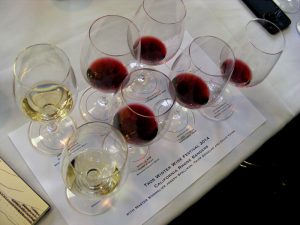 Syrah remains the show pony for Rhône varietals in California, and rightly so as it has consistently produced age-worthy wines for at least a couple decades. One reason for its success is the widely planted Estrella clone from the regal Chapoutier family in storied Hermitage.
Syrah remains the show pony for Rhône varietals in California, and rightly so as it has consistently produced age-worthy wines for at least a couple decades. One reason for its success is the widely planted Estrella clone from the regal Chapoutier family in storied Hermitage.
First planted in 1975 at Estrella River Winery in Paso Robles, Estrella is known for its flavors of rich, deep berry jam and, with cellar time, exotic Indus Valley spices.
Our final wine was the 2011 Jaffurs Syrah from the famed Thompson Vineyard, composed of 100% Estrella clone Syrah. In the glass it was deep and brooding, purple and black.
As it was the last wine, I gave myself a breather before diving in to it.
The room was oooh-ing and aaah-ing all around me, but I allowed myself only a deep sniff. Blueberry jam and a rich earthiness leapt out initially, while the second swirl and sniff offered a minty component.
On the palate the Thompson Syrah was more focused than I’d anticipated, impressing with its effortless balance of deep, fruit forward juice and dazzling acid, creating a sleek and structured Wine that seemed built to last, but was absolutely enjoyable in the now.
Joe thanked us all and we gave a well-deserved round of applause for the Wines and their representatives. Nobody seemed to want to leave though, as the vibe in the room was warm and many attendees seemed to know one another.
She’s Mighty, Mighty, Just Lettin’ It All Hang Out
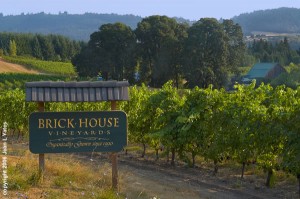 As they milled about, I gathered my camera and headed off to the adjacent room to get the lay of the land for the grand tasting. Specifically, I was hoping to talk with someone from both Beaux Frères, and Brick House Wineries, both Biodynamic practitioners located in Oregon.
As they milled about, I gathered my camera and headed off to the adjacent room to get the lay of the land for the grand tasting. Specifically, I was hoping to talk with someone from both Beaux Frères, and Brick House Wineries, both Biodynamic practitioners located in Oregon.
Fortunately, I stumbled upon Doug Tunnell, Brick House’s Winemaker, Vineyard Manager, and Biodynamic trailblazer, standing alone at his booth, casually enjoying the scenery.
I approached him and introduced myself. He was immediately affable and laid-back in a rather Oregonian way, and when asked if he wouldn’t mind discussing his Biodynamic practices on the spot — while I recorded him — he gave a nonchalant shrug and said, “Sure.”
After a quick interview he asked if I wanted to taste the wines. My ears immediately perked up, but not wanting to sound too eager, I casually replied, “Sure… why not?”
Needless to say, the wines didn’t disappoint, and rightfully deserve to be the subject of their own lengthy article.
Beaux Frères’ Winemaker & Managing Partner Mike Etzel was pouring for a nice middle-aged couple when I approached his booth. Apparently, the doors to the Grand Tasting had opened when I was talking to Doug, and now it was if I had just walked into a full-court press. As I got closer, Mike looked up from his bottles and asked if he could help me.
I introduced myself and quickly told him about my interest in Biodynamics. We had a quick chat, wherein I realized we wouldn’t be able to get into any kind of depth, so I surrendered to tasting in the hustle and bustle of the environment.
This after the eight California Rhônes I’d just gone through in depth, and with copious amounts of unexplored booths ahead in the Grand Tasting.
Yes, the wines impressed deeply, and, once again, warranted the birth of an opus all their own. But I suddenly found myself lost among the throng, a little discombobulated, and perhaps a little tipsy.
Big tastings, much like speed dating require one give their full attention to the gem that speaks above all others. Once that connection is made, it’s appropriate to get to know them more intimately. And so, in that fashion I went on, taking time to talk with the winemakers about their craft, taking notes and generally enjoying myself.
There was some wonderful food and plenty of free Fiji water about to somewhat mitigate the purple coating on the tongue and prepare it for the next round. I ran across a wonderful locally-produced rabbit sausage from the Snakedance up in the ski valley and ate more than my share.
Things were starting to wind up, so I gathered my things and bundled up for the brisk walk out to the car.
Out in the blackness of night, high up in the Alpine elegance of the ski valley, stars seem close enough to touch. It’s a dramatic backdrop for such an event and undoubtedly spawns many a memory in its attendees.
Working my way down the mountain road in the car later, I was thinking about the wines I’d enjoyed over the weekend, which was a bit of a Saturnalia. I can honestly say I can’t remember the last time I’d been presented with such an august line-up of wines, or had so much fun delving into the world of wine.
If you’ve a hankering to delve into the world of wine this year, this coming Winter will afford you the opportunity to do so in grand fashion when The 29th Taos Winter Wine Festival comes to town. Start preparing your palate, and clear your calendar now.

